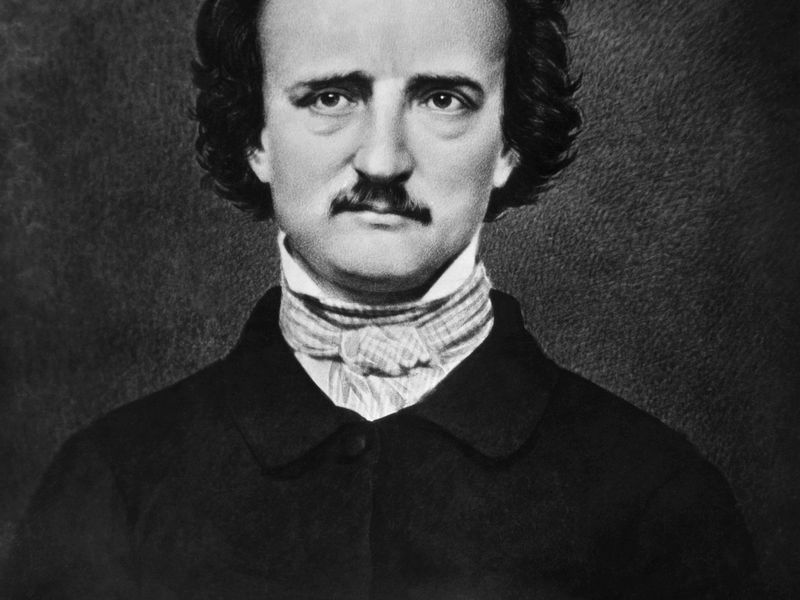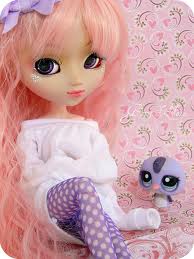About the Poet:
Edgar Allan Poe (January 19, 1809 – October 7, 1849) was an American writer, editor, and literary critic. Poe is best known for his poetry and short stories, particularly his tales of mystery and the macabre. He is widely regarded as a central figure of Romanticism in the United States and American literature as a whole, and he was one of the country’s earliest practitioners of the short story. Poe is generally considered the inventor of the detective fiction genre and is further credited with contributing to the emerging genre of science fiction.
Introduction to The Raven:
The Raven is Poe’s narrative poem by American writer Edgar Allan Poe. First published in January 1845, the poem is often noted for its musicality, stylized language, and supernatural atmosphere. It tells of a talking raven‘s mysterious visit to a distraught lover, tracing the man’s slow fall into madness. The lover, often identified as being a student, is lamenting the loss of his love, Lenore. Sitting on a bust of Pallas, the raven seems to further instigate his distress with its constant repetition of the word “Nevermore”. The poem makes use of a number of folks, mythological, religious, and classical references to convey its message to the reader.
The Setting of The Raven:
Edgar Allen Poe’s “The Raven” follows an unnamed narrator on a dreary night in December who sits reading “forgotten lore” by a dying fire as a way to forget the death of his beloved Lenore. A “tapping at his chamber door” reveals nothing but excites his soul instead. The tapping is repeated, slightly louder, and he realizes it is coming from his window. When he goes to investigate, a raven flutters into his chamber. Paying no attention to the man, the raven perches on a bust of Pallas above the door.
Poetic Devices in The Raven:
Alliterations:
Line 1: while I pondered, weak and weary,
Line 3: nodded, nearly napping,
Line 10: my books surcease of sorrow—sorrow for the lost
Line 11: For the rare and radiant maiden
Line 13: And the silken, sad,
Line 14: filled me with fantastic terrors never felt before;
Line 15: still the beating of my heart, I stood
Line 16: entreating entrance
Line 23: That I scarce was sure
Line 25: Deep into that darkness
Line 26: Doubting, dreaming dreams no mortal ever dared to
dream
Line 27: silence was unbroken, and the stillness
Line 28: word there spoken was the whispered word,
Line 30: Merely this and nothing more.
Line 32: Soon again I heard a tapping somewhat louder than
before.
Line 33: Surely,” said I, “surely that is something
Line 35: moment and this mystery
Line 37: flung the shutter, when, with many a flirt and flutter,
Line 38: stepped a stately Raven of the saintly days
Line 39: stopped or stayed
Line 41: Perched upon a bust of Pallas
Line 43: bird beguiling my sad fancy
Line 45: crest be and shaven, thou,” I said, “art sure no craven,
Line 47: is on the Night’s Plutonian shore!”
Line 49: Much I marveled
Line 51: help agreeing that no living human
Line 53: Bird or beast upon the sculptured bust
Line 60: Startled at the stillness
Line 63: Followed fast and followed faster
Line 70: this grim, ungainly, ghastly, gaunt,
Line 73: fowl whose fiery eyes
Line 76: velvet-violet lining with the lamp-light
Line 79: Swung by Seraphim whose foot-falls tinkled on the
tufted floor.
Line 80: these angels he hath sent thee
Line 85: Whether Tempter sent, or whether tempest tossed thee
Line 86: Desolate yet all undaunted, on this desert
Line 92: soul with sorrow
Line 98: soul hath spoken!
Line 100: Take thy beak from out my heart, and take thy form
from off my door!”
Line 104: demon’s that is dream
Line 105: streaming throws his shadow
Line 106: And my soul from out that shadow
The Style of The Raven:
Once upon a midnight dreary, while I pondered, weak and weary, (A)
Over many a quaint and curious volume of forgotten lore— (B)
While I nodded, nearly napping, suddenly there came a tapping, (C)
As of someone gently rapping, rapping at my chamber door. (B)
“’Tis some visitor,” I muttered, “tapping at my chamber door— (B)
Only this and nothing more.” (B)
Summary of The Raven:
The Raven” is unquestionably Poe’s most famous poem. After its publication, it became so well known that its refrain “nevermore” became a catchphrase repeated by people on the street. Poe, who told one friend that he thought the poem was the greatest poem ever written, was delighted one night at the theater when an actor interpolated the word into his speech, and almost everyone in the audience seemed to recognize the allusion.
Critical Analysis of The Raven:
Poe is really keying up the suspense now. Again, it’s hard for us not to think of a horror movie, where the nervous main character walks up to a door, slowly turns the knob, and finds nothing. That’s always the sure sign that the surprise is coming, and when we least expect it. There’s something mysterious and powerful about the word Nevermore, though, and the speaker has the feeling that it contains the bird’s whole soul.
Central Idea of The Raven:
For our depressed, grief-stricken narrator, the whole world seems bleak and terrifying, and everything, even the darkness, reminds him of his lost love. Fancy words aside, you might recognize this feeling. You’re feeling down about something, and suddenly the sight of something strikes you as funny. For some reason, the light and the cushion push him back to his old obsession. He remembers that Lenore will never sit on this cushion again and that she’s really gone forever.
The tone of The Raven:
In the first two lines, we find out that it’s late on a “dreary” night, and that our speaker is reading weird old books and feeling “weak and weary.” He hopes for an end to the pain, what he calls “surcease from sorrow” (10), but maybe staying up and reading late in December isn’t the best way to get your mind off of a loved one’s death. His heart starts to beat faster too; to calm himself down, he has to tell himself (twice) that the knocking sound he hears is just a visitor. The more he says it though, the more we all know that it can’t just be that, or at least not the kind of visitor he might be expecting. Like anyone who is near the edge, he tries to get a grip, to come up with a rational explanation. He decides the sound is coming from the window, and he forces himself to go take a look. He sinks into the chair and tries to think what this scary, ancient-looking bird could mean with this one word. Even though he guesses that it’s just a random word the bird has learned, something still intrigues him; he can’t quite let this go. He keeps pumping this dry well, asking the bird another question, this one a little more to the point. He has later turned into a kind of statue himself, a glowing, scary demon statue, whose shadow is cast across the floor. That shadow has trapped the speaker, imprisoned his soul.
Conclusion:
As Poe wished to create an effect of beauty associated with melancholy in the poem; he decided that the refrain “nevermore,” uttered to a young man whose mistress has recently died, was perfectly calculated to achieve that effect. According to Poe, the basic situation, the central character, and the plot of the poem were all created as a pretext or excuse for setting up the “nevermore” refrain, to be repeated with a variety of meaning and impact each time. Although the poem is often dismissed as a cold-blooded contrivance, it is actually a carefully designed embodiment of the human need to torture the self and to find meaning in meaninglessness.
Contributor: Deeksha Honawar
Some online learning platforms provide certifications, while others are designed to simply grow your skills in your personal and professional life. Including Masterclass and Coursera, here are our recommendations for the best online learning platforms you can sign up for today.
The 7 Best Online Learning Platforms of 2022
- Best Overall: Coursera
- Best for Niche Topics: Udemy
- Best for Creative Fields: Skillshare
- Best for Celebrity Lessons: MasterClass
- Best for STEM: EdX
- Best for Career Building: Udacity
- Best for Data Learning: Pluralsight
















